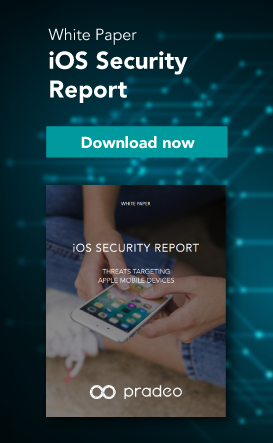Ever-growing mobile usages are reinforced by remote working. Device management and automated mobile threat defense is the winning combination to prevent corporate data theft and exfiltration.
The pandemic has urged companies to set up remote working. When it was not already the case, employees are now more than ever using their mobile devices to carry on with their work tasks.
A typical remote worker’s mobile device (BYOD, hybrid…) is used for both work-related and personal usages, which generate a plethora of data that have turned into the new oil. In this perspective, mobile devices have become a top target for personal and corporate data theft and represent a security challenge that companies must address.
To fully turn working from home into a success, companies must protect their information by implementing automated security solutions. In that regard, VMware launched this year Workspace ONE Intelligence, a service that completes unified endpoint management with security automation. As a member of VMware’s Trust Network, Pradeo powers Workspace ONE’s mobile security automation.
Watch our on-demand webinar “How to automate mobile security in Workspace ONE ”
Cyberthreats targeting the mobile workforce
Remote workers operate beyond the enterprise perimeter and directly face cyberthreats. Over the last decade, cybercriminals set aside laptops and company-oriented attacks, preferring smartphones, and switching to a user-centric model. Since then, mobile threats are continuously evolving, being characterized by their versatility.
Looking at Pradeo’s latest annual mobile security report, applications unsurprisingly represent the first vector of threats and account for 76% of the overall attack surface. The mobile paradigm, by putting applications at the heart of usages, facilitates hackers’ outreach who demonstrates twice ingenuity to hide malicious intentions in the guise of common apps. Despite preconceived ideas, both Android and iOS are exposed. For instance, 3/5 of iOS devices host at least one application sending contacts over the network versus 2/3 of Android.
Come next network attacks, 16% overall, that are inconsistently perpetrated across the globe and closely linked to the propensity of mobile users in the region to connect to free WiFis, as such unsafe accesses mechanically trigger attempts for Man-In-The-Middle attacks.
Finally, OS exploits account for 8% of overall mobile compromise as 54% of Android devices and 23% of iOS devices run an outdated OS version, leaving another backdoor for hackers to get in.
How to secure employees’ mobile devices
There is a set of individual best practices remote workers have to stick to. Still, those cannot be considered as proper security gates from a company perspective. As is any laptop, smartphones must be managed and run proper defense capabilities to proactively protect corporate data.
The management of devices comes as the obvious first step to identify the fleet, industrially distribute and potentially containerize corporate resources. Then, intelligence and mobile threat defense are required to dynamically detect and remediate threats.
A close interaction between management, intelligence and threat defense services eases both the implementation and enforcement of the security posture of the company. In that respect, VMware and Pradeo rely on a long-term partnership reflected through strong integrations between Workspace ONE and Pradeo Security Mobile Threat Defense solutions.
Pradeo leverages its expertise and multi-level threat detection engine to feed Workspace ONE Intelligence with mobile security events covering mobile devices’ apps, network and system contexts, to enable the automation of data-driven security decisions.



.png)



